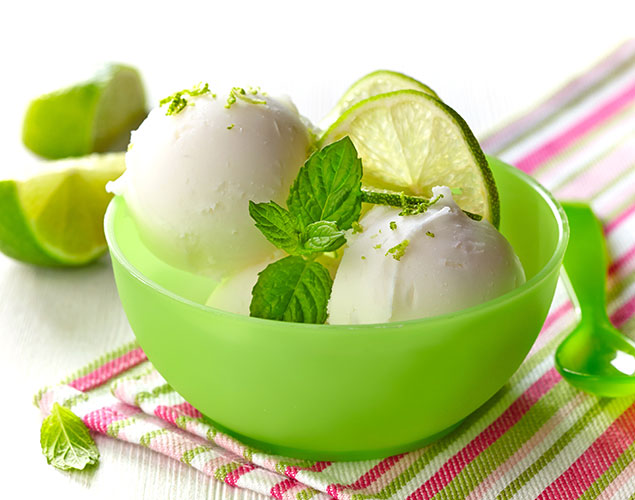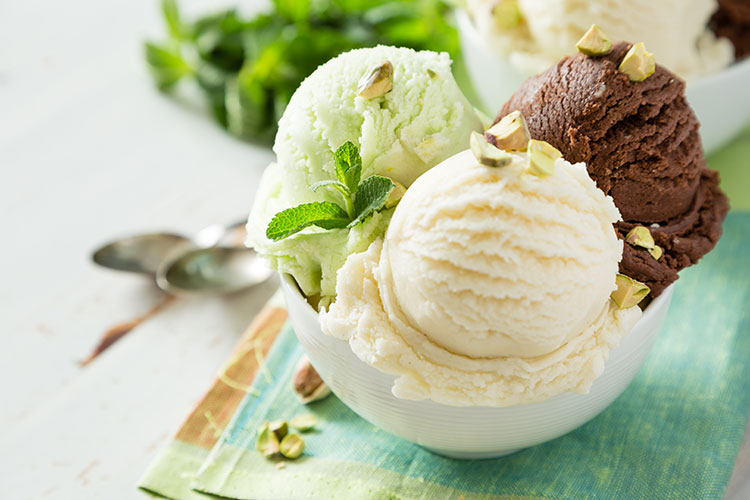Frozen Desserts: Smoothing Out the Texture
Frozen desserts, like ice cream, tend to fall victim of ice crystals during handling and storage due to temperature fluctuations. Stabilizers bind the water, however, they have their own limitations. Citri-Fi® citrus fiber, when used at less that 1%, minimizes the ice crystals to create a smooth texture while cleaning up food labels.
It is one of the many nostalgic memories that many Earth dwellers have had since childhood – eating ice cream. And if you reside in the USA, you most likely recall the infamous Baskin-Robbins 31 Flavors ice cream shop. This frozen dessert joint sold a flavor for every day of the month. But ironically, many lickers defaulted to their favorite flavor or flavors if given the choice. Today, ice cream not only comes in different flavors but also bases too. Originally, milk was the starting base. However, frozen desserts now can be churned using plant-based milks like oat, almond, coconut and cashew.
The Scoop on Ice Cream Challenges
Making ice cream appears effortless as long as one has an ice cream maker. But when produced on a large scale and distributed across miles of land, frozen desserts are subjected to fluctuating temperatures or heat shock. As a result, ice crystals tend to grow reducing the smooth and creamy texture. Many factors play into preventing water migration during handling and storage including the formulation components, fat level, total solids and overrun.
Ice cream producers rely on stabilizers to bind the water during the quick freeze to minimize ice crystals. The water remains bound during temperature changes preventing ice crystals from forming. However, stabilizers like locust bean gum and guar gum have their limitations. For instance, ice cream stabilizers may be optimal for milk-based ice creams, but they may fall short in dairy-free formats. Many plant-based frozen desserts tend to have a short shelf-life. The longer the time in freezer storage increases the risk of a gummy and chewy texture when using foods gums. Moreover, many food gums fall suspect when found on food labels.
Clean, Smooth and Creamy Ice Cream
One natural solution available includes citrus fiber which locks up the water to create the silky texture. Citri-Fi citrus fiber is produced from byproduct of the citrus juicing industry. This natural food ingredient uses a process free from chemical modifications unlike similar ingredients in the marketplace. At the same time, not all citrus fibers are created the same. Others are byproduct of the pectin extraction which typically use solvents and other chemicals to isolate the fiber. Because of this process, some of these byproducts lack the functionality due to the low levels of intact pectin. As a result, some producers add the pectin back in to enhance the functionality. Alternatively, Citri-Fi citrus fiber is wholistic and contains native intact pectin like Mother Nature intended.
At less than 1% usage level, Citri-Fi provides the water holding and emulsification properties needed to prevent ice crystals from forming over time. Citri-Fi citrus fiber improves the texture, stability and nutrition of both animal-based dairy and plant-based dairy desserts. For example, this citrus fiber works in a variety of non-dairy bases such as almond, oat, rice and coconut plant milks.
In addition to the texture improvement, the Citri-Fi citrus fiber line also cleans up frozen dessert food labeling. This is key in both animal and plant-based ice cream markets. Many brands are going back to ice cream basics listing less than five ingredients. And clean label continues to be a hot trend in plant-based foods including non-dairy desserts. Citri-Fi’s labeling options include citrus fiber, dried citrus pulp or citrus flour which resonate well in the clean label markets. Also, the USDA certified organic Citri-Fi 400 series is now available.
For more information about using citrus fiber in frozen desserts, please contact Fiberstar.






